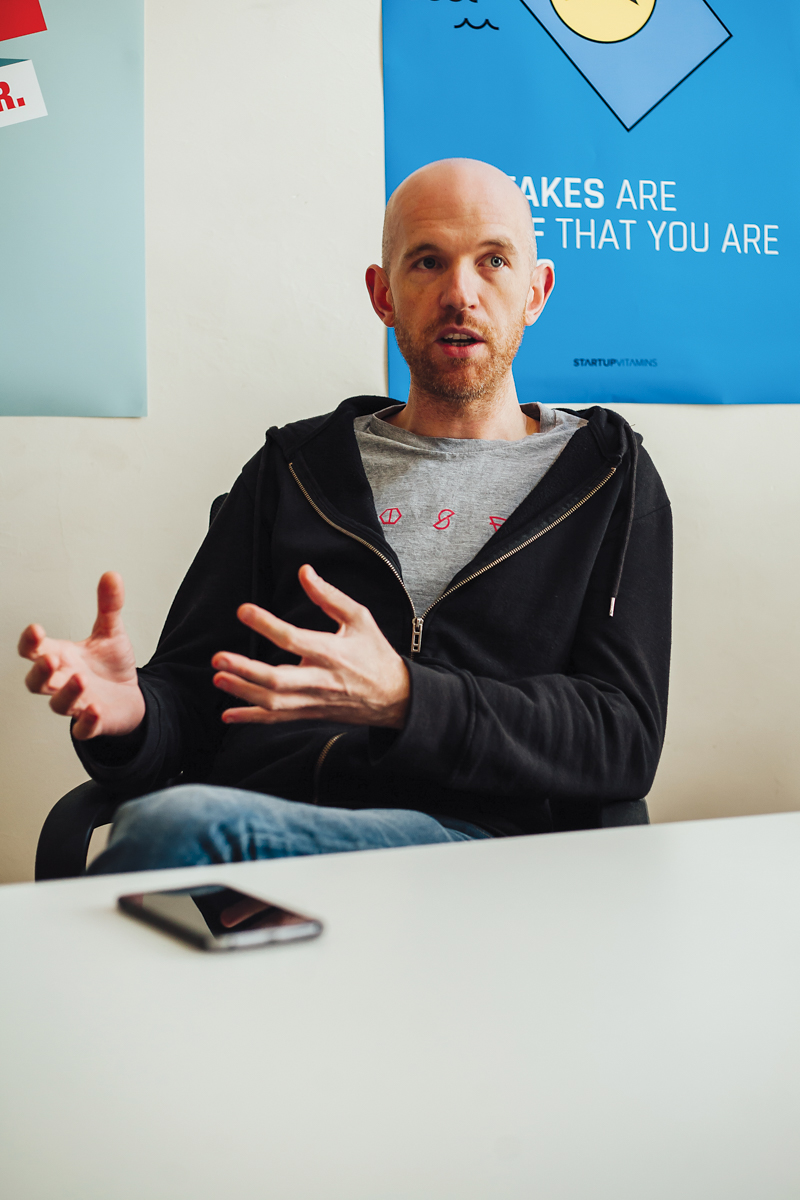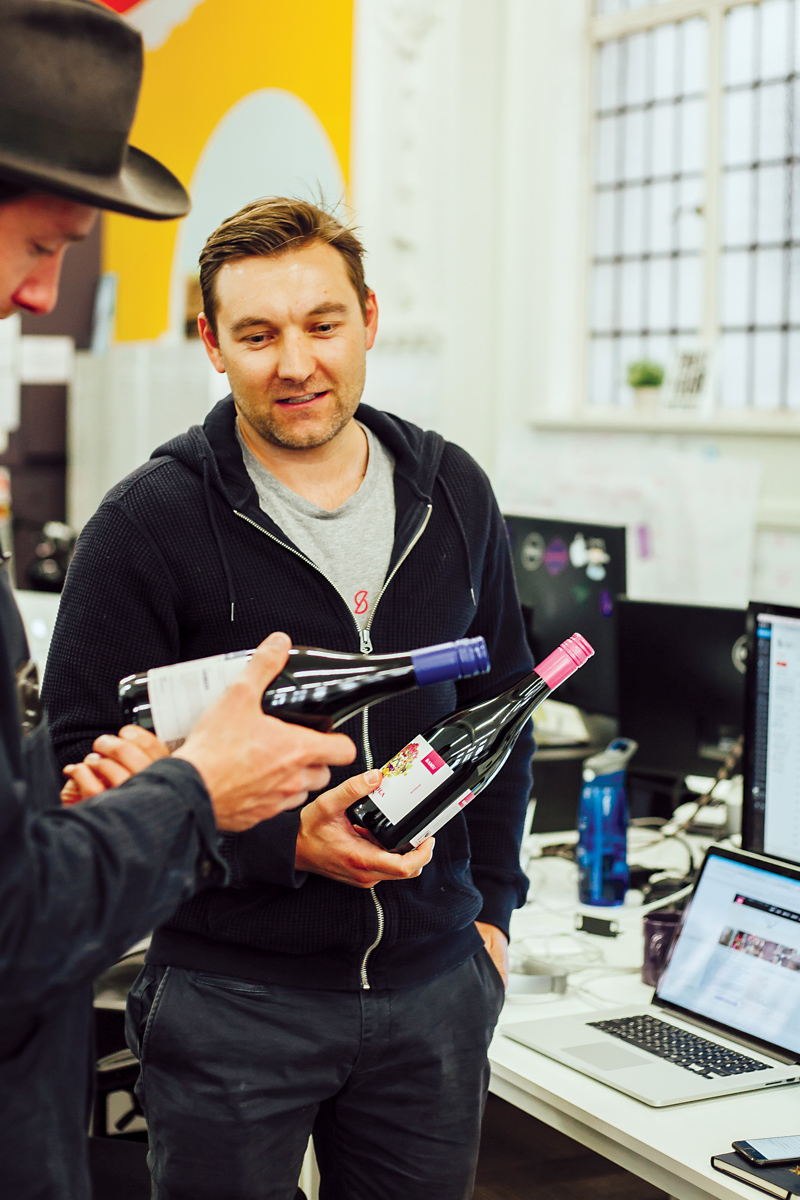Established as a high-speed fibre optic network for the state’s universities, SABRENet is being extended by the Government of South Australia to connect Adelaide’s key innovation precincts with super fast internet.
When the difference between boom and bust is a second
Whether inspired by frustration with the NBN rollout or a US city that went from rust to shine times, the Gig City infrastructure project will make Adelaide the first Australian city to enable 10 gigabit per second internet connections.
“The difference between ADSL and fibre optic,” says Steve Barrett director of the Southstart conference and co-working space on Grenfell Street, “is like comparing a straw with a huge concrete pipe.”
Find out where you can access the gig network and stay connected to the project as it rolls out across Adelaide.

Steve Barrett talking bananas and gigabits
Passionate about the Gig City Program, Steve stresses the frustration he has with Internet Service Providers (ISPs) and Internet speeds in Adelaide.
“It’s like trying to push a banana through a coin slot,” he says.
Flippant it may seem, but it’s feedback like this from Adelaide’s start up community that’s reached the Premier’s ears.
Premier Jay Weatherill is championing Gig City as an essential step in transitioning the state’s economy from the industrial era into the information age.
“The difference the Gig City program will make to business in the innovation sector will be huge,” says the Premier.
“This sector is the future of employment for many South Australians and we, as a state, can’t afford to have business and business growth held back by slow internet speeds.”
The Premier became an advocate for Adelaide’s bid to become Australia’s first Gig City after a visit to the USA’s first Gig City.
Chattanooga in Tennessee is an old school manufacturing town – among its boasts: The world’s first Coca-Cola bottling plant. But, by the early 2000s Chattanooga’s economy was obviously slowing, a reflection of the global postindustrial age reality.
In 2009 the city seized on an opportunity to transform its electrical utility into an internet service provider. It set about laying fibre optic cable under the streets of Chattanooga that would be capable of delivering internet connection speeds of up to 10 gigabits per second.
The effect of this investment on the city of 171,000 has been monumental. The city-run Electric Power Board’s fibre optic internet has been attributed with generating over $1 billion in economic and social benefits, 3,000 new jobs and the establishment of five organised venture capital funds.
By stark comparison with Adelaide, where Holden is winding down operations, in 2011 German car manufacturer, Volkswagen, opened its first American manufacturing plant in Chattanooga since shuttering US operations in 1988.

An economy in transition: Chattanooga in the US has attracted investment and created jobs off the back of their high speed internet infrastructure
The high speed internet network not only provided the company with the confidence to invest $1 billion in building the facility, but the rationale to establish a large-scale research and development centre in downtown Chattanooga, which is set to employ 200 engineers.

Sam Underdown is program manager at Southstart and owner of SAMU Wines – a not-so-tech start up
It’s true Adelaide often rushes to draw comparisons with small cities beyond our border, forgetting the local, cultural and psychological mindset that is so important to driving economic growth. But, right now, Adelaide seems ready for this investment.
Steve Barrett can see the growth potential in the start up and venture capital economy because it’s measurable.
“The first Southstart conference was held in 2013”, says Steve, continuing, “We skipped a year and held the second conference in Adelaide in 2015 – attendance doubled. We attracted attendees from interstate and the conference was a huge success. On a train back home from Sydney, I began thinking about how we could make the conference bigger, take it to Perth and Hobart – make it the biggest start-up conference in the Southern Hemisphere.”
It’s a simple exercise in scaling for Steve, something every start up in Adelaide is already thinking about and planning for.
“Every company in [Southstart co-working space] is thinking global,” says Steve.
Ambition is the lifeblood of the innovation and technology sector. It’s an industry that operates regardless of geography limited purely by imagination – imagination and the Internet.
“Having the Gig City infrastructure will mean everything on a Tuesday afternoon doesn’t grind to a halt,” says Steve.
“It will mean that no matter what our resident companies are uploading or downloading, who they’re skype conferencing with and where, how long their YouTube playlist is, their workflow will be uninterrupted. This gets ideas out of heads and into the workshop faster, it grows companies faster and gives confidence to businesses here that Adelaide has a solid base to build from.”
Gig City is just another way to say ‘smart city’, and a smart city is one that removes the roadblocks, which separating our ambition from action. A gigabit of data per second may seem unnecessary right now, but it can be the difference between a car plant closing and a brand new billion-dollar business being born.




